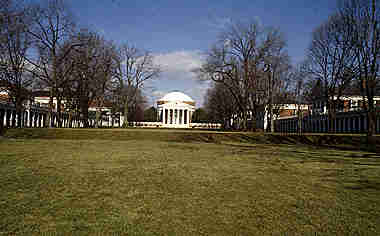
Thomas Jefferson founded the University of Virginia by securing its land, obtaining state funding and designing its distinctive grounds and buildings. The project officially began with the University's charter in 1819. Jefferson devoted his last years to the project, completing the rotunda the same year he died, 1826.
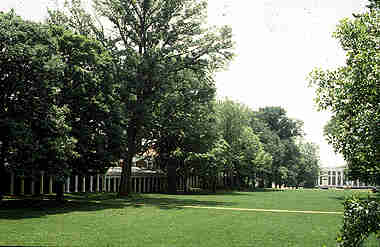
The Lawn, anchored at the north end by the Rotunda, still looks and functions much as it did in Jefferson's era--as a vital community organized around learning.
The original Lawn is built in three terraces, which drop 18 feet over the Lawn's 255 feet in length. Each side of the lawn has five pavilions and a number of student rooms located between them.

Along each side runs a one-story Tuscan colonnade that Jefferson modeled on the colonnade at the White House.

The Lawn's ten pavilions are each unique. Jefferson wanted the buildings to do triple duty--besides functioning as classrooms and faculty living quarters, each embodies classical design features that make it a fitting subject for architectural study.

Mr. Jefferson's University stands as a physical model of his educational ideals. He believed that a University should be a community of scholars, and to further that ideal he designed living and learning spaces around the monumental Rotunda--a classically-inspired building that served as the University's library and meeting hall.
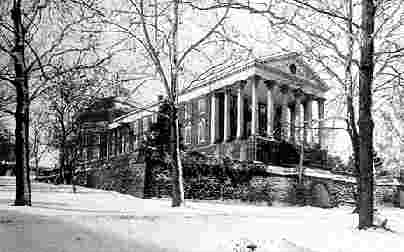
One of Jefferson's pupils, architect Robert Mills, designed the Annex, which satisfied the needs of a growing University for more space. The Annex, built in 1851-53, contained a large public hall, classrooms, and laboratories. Mills modeled its north portico on the Rotunda's south portico, substituting cast iron capital for expensive Italian marble.
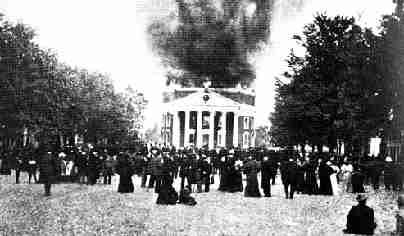
On an autumn Sunday in 1895, fire broke out in the Annex. As the University community raced to empty the Rotunda of its precious books, others fought the fire, even dropping dynamite between the Annex and the Rotunda to destroy the link between the two.
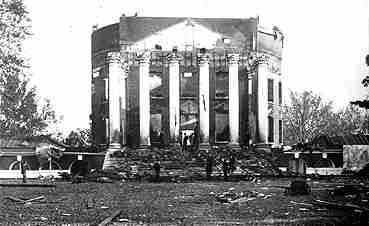
The attempt failed, and firefighting equipment from Richmond and Lynchburg arrived too late to prevent the flames from claiming all of Mr. Jefferson's Rotunda, except its brick shell.
Efforts to rebuild the Rotunda began even as the last flames died. A faculty committee ordered the building's exterior restored to its original appearance. The committee decided not to rebuild the Annex--which was never part of Jefferson's design.

Pavilion II, completed in October 1822, adjoins the Rotunda on the lawn's south side. Its four Ionic columns create three bays. The two-story columns are built of plastered brick, and topped by Italian marble Ionic capitals. A bucket brigade saved Pavilion II from the 1895 Rotunda fire.

Ornate Corinthean capitals mark Pavilion III. Each was fashioned in Italy from Carrara marble, and brought into the United States as "educational materials" to save customs duty. The house was built with two front entrances. One, in the center, led to the classroom. The other led to the faculty residence.
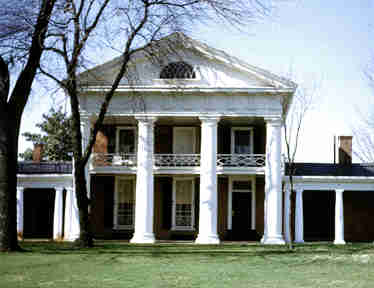
Jefferson designed this three-bay temple front structure with a center door, but the door was moved later during a renovation. The Doric columns frame the same style of triple-sash "walk-out" windows that Jefferson used at Monticello.
In 1835, a renegade faculty member covered Pavilion IV's brick with a coat of red paint that is still visible today.
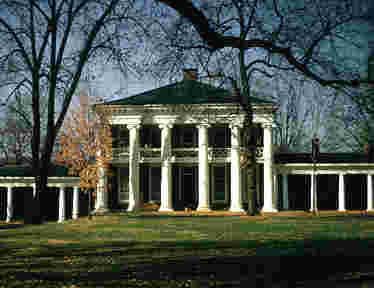
Pavilion V wears a six-column, two-story portico. Ionic capitals, carved in Italy, top the columns. The upper floor contains a center door and four windows, although Jefferson's original drawing omitted the door. The gallery railing combines three different Chinese trellis designs.
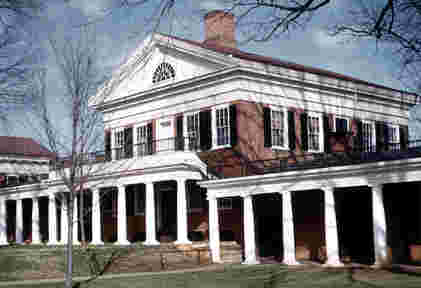
Pavilion VI lacks a portico, fronted instead by the one-story columns of the colonnade. Double-hung windows flank double doors on the upper and lower levels.

The oldest building on the Lawn, Pavilion VII is also called the Colonnade Club. Its upper-floor, one-story Doric portico tops and arcaded first floor.
Many of Pavilion VII's design features--the deep gallery, upper and lower center doors, triple-sash "walk-out" windows, and lattice railings--were incorporated into the other pavilions.
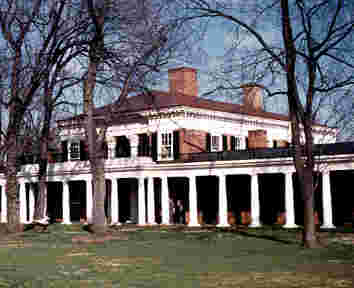
An Italian entrance treatment distinguishes Pavilion VIII, although a classical Corinthean motif marks the capitals and entablature.
Jefferson's notebooks attribute the design of Pavilion VIII to architect Benjamin Henry Latrobe, who inspired Jefferson's designs of both the Lawn and Rotunda.
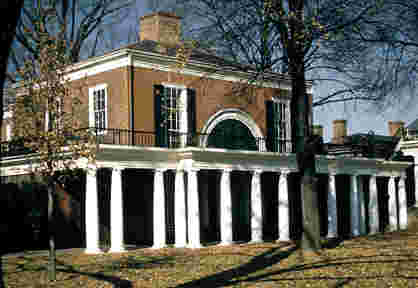
A striking half-domed doorway and curved double doors dominate Pavilion IX, bringing a French influence to the Lawn.
The Reverend William McGuffey, author of McGuffey's Eclectic Readers, was a long-time resident of Pavilion IX. In addition to developing the popular children's readers, he taught ethics, logic, psychology, sociology, and political economy as the University's Professor of Moral Philosophy.
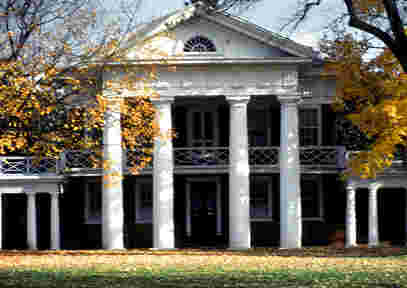
Pavilion X sits at the point where the terraced Lawn makes its steepest drop. The structure is unique for its narrow gallery, which is only half the width of the other pavilion's galleries, and for its Greek-style columns that sit flat on the ground. The elaborite cornice is ornamented in the Doric style.

On each side of the lawn, behind the gardens, are the east and west Ranges. The Ranges were part of Jefferson's original plan, and contain 54 student rooms, which face outward, away from the lawn, under an arcade.
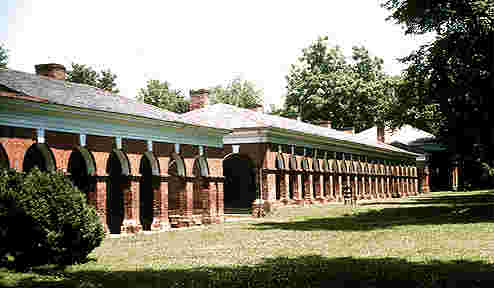
Each range contains three hotels, which orginally had separate "innkeepers" who fed and furnished students living in the rooms around them. Now the hotels function as office and meeting space for the University community.

And that is Mr. Jeffersons University of Virginia. You did yourself proud, Mr. Jefferson.

Thomas Jefferson wanted to be remembered for only three things:1. Author of the Declaration of American Independence
2. Author of the Statutes of Virginia for Religious Freedom
3. Founder of the University of Virginia in Charlottesville.
This is the epitaph on his tombstone, where all his wishes and his days ended...at his beloved Monticello.
Thomas Jefferson was presented by Bobby and Bev
























